Traditionally, the practice for managing rainfall in landscapes has been to move it out as quickly and efficiently as possible. Though it moves the water quickly out of our yards,
that approach has negatively affected our water quality by creating more flooding downstream and eliminating the natural cleansing process that happens when water passes through soil.
“Slow it, spread it, sink it” is the sustainable-water-design mantra coined by Brock Dolman, cofounder and program director at the Occidental Arts & Ecology Center in California. This mantra is used by municipalities and water conservation groups to spread knowledge of sustainable water practices. In this series we will define what each of those steps means and how you can design your landscape accordingly, starting with the first step: slow it.
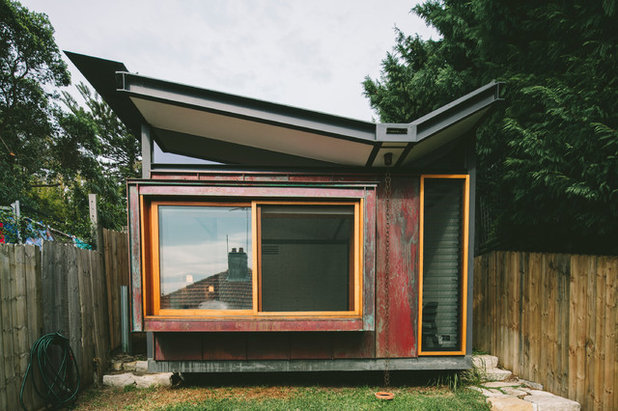
Takt | Studio for Architecture
There is a quiet revolution among landscape architects and designers who are choosing to design with water in a more sustainable fashion. One of the key concepts in sustainable water design is the concept of “daylighting” water — a term that means bringing water that’s moving underground in pipes and culverts up to the surface. Daylighting these water bodies improves water quality because the water is naturally exposed to light, air, soil and plants, which all work together to create clean water. It also does the important job of slowing down the water. Slowed water means less flood impact downstream, less erosion and more opportunity for the water to soak through the soil and be naturally cleansed.
First, identify where water runoff happens in your yard. Any hard surface, such as roof shingles, asphalt, concrete or rocky outcroppings, will shed water quickly; roofs, driveways and steep slopes are likely culprits Determine how you can intercept water at those locations, and slow it down through storage, permeable surfaces, swales and plantings.
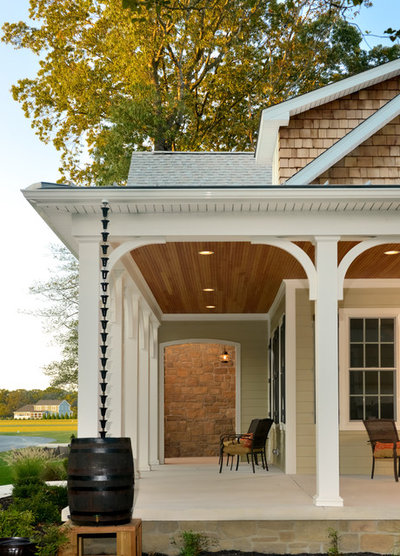
The Lewes Building Company
RooftopStore water from your downspouts.
Collecting roof runoff in a rain barrel or cistern for later use
takes a significant volume of water out of the runoff equation and also reduces your dependence on municipal water. During times of low rainfall or drought, you’ll have access to free rainwater for irrigation.
6 Reasons Why You Should Save Your Rainwater Now
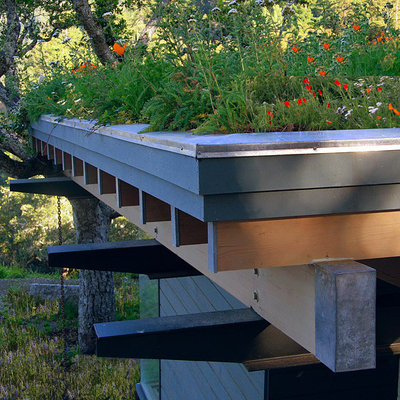
Feldman Architecture, Inc.
Intercept runoff with a green roof. Green roofs have many environmental benefits; their ability to intercept and soak up water during small, frequent rainstorms is one of the best. A shallow green roof can absorb an inch of rain and release it back into the atmosphere through evapotranspiration, which lessens the stormwater runoff load on downstream water bodies.
Additionally, green roofs help initially cleanse water during larger storms. The runoff that flows from a green roof is cleaner than the runoff from an impervious roof surface.
4 Ways Green Roofs Help Manage Stormwater
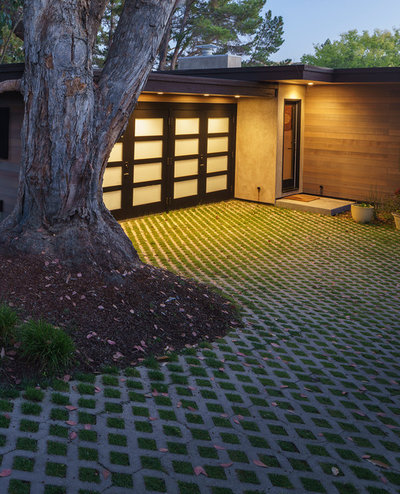
TOPOS Architects, Inc
DrivewayUse permeable paving. Permeable paving on driveways and large patios gives water the chance to percolate into the soil
, while also adding visual interest to the landscape. Water moves slowly through the soil, cleaning as it percolates through, before returning to the aquifer.
Though permeable paving does not absorb 100 percent of water received during heavy storms, it does help slow down excess runoff through surface friction, which provides some aeration and the gives water more opportunity to percolate into the soil.
This driveway features grass-planted concrete pavers that are designed to handle cars, while water drains through each paver’s center.
How to Build a Greener Driveway
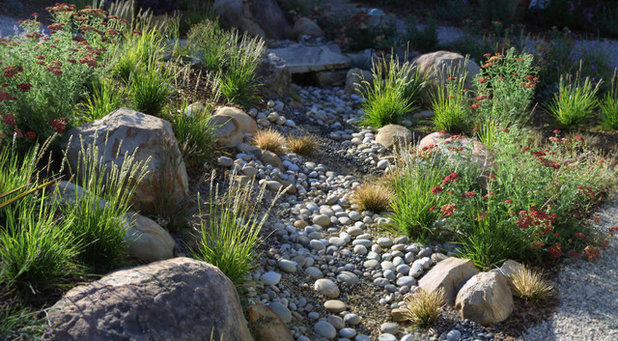
Margie Grace - Grace Design Associates
Sloped SiteMove water with a swale. Swales are a cost-effective way to manage stormwater in your landscape, as opposed to installing pipes and subdrainage. They also make the movement of water visible, which can create a defining aspect to the landscape design.
A swale that’s curvy and bumpy will provide maximum benefit for slowing down water. The curves create a meandering path for the flow of water, and rocks and plants break up the surface to aerate the water as it moves.
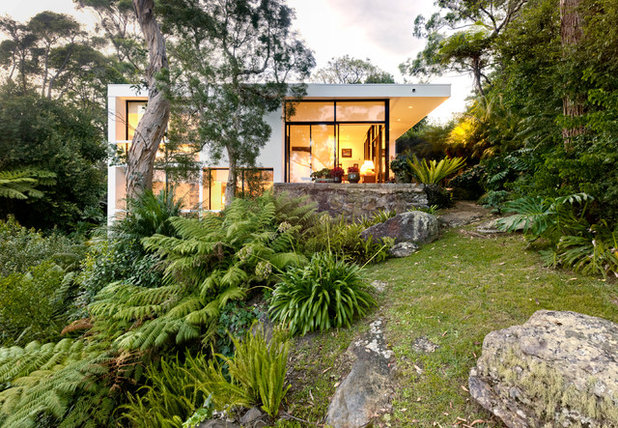
Porebski Architects
Plant steep slopes. Plant slopes with herbaceous and woody plants to slow down quickly running water. This does several good things: It reduces the likelihood of erosion, stabilizes the slope and slows water down significantly more than a slope planted with a mowed lawn.
How to Design a Great Garden on a Sloped Lot

Island Gardens Company
Plant rocky surfaces. Similar to asphalt and concrete, even naturally occurring rocky surfaces will quickly shed water. The rock outcropping shown here is also part of a steep slope, which means water whisks right off it. You can plant rocky slopes with alpine species that thrive in low soil volumes. Even a small pocket of soil is enough to carefully establish plants that will spread among a rocky surface. Over time, those plants can spread within the rock crevices to break up the surface and slow water runoff.
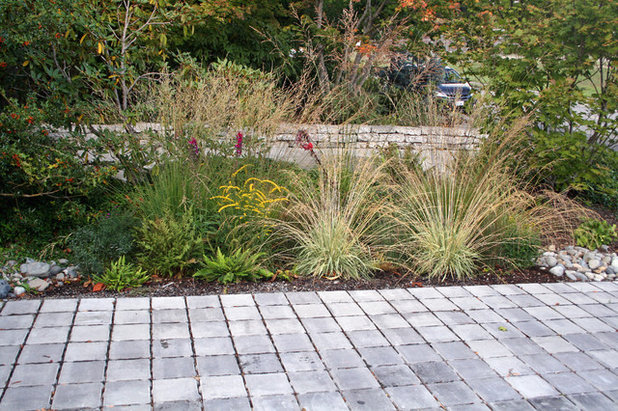
Banyon Tree Design Studio
This rain garden at the edge of a permeable driveway catches additional runoff during heavy storms.
Next: How to spread water runoff so that it can percolate into the soil





